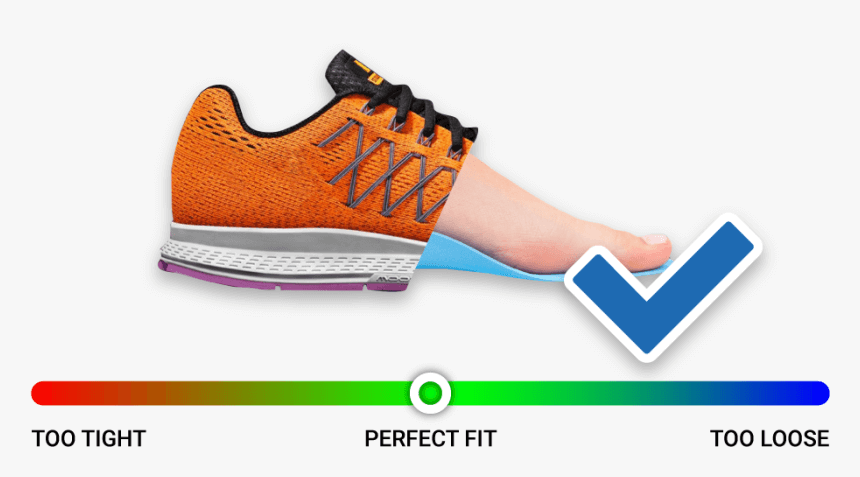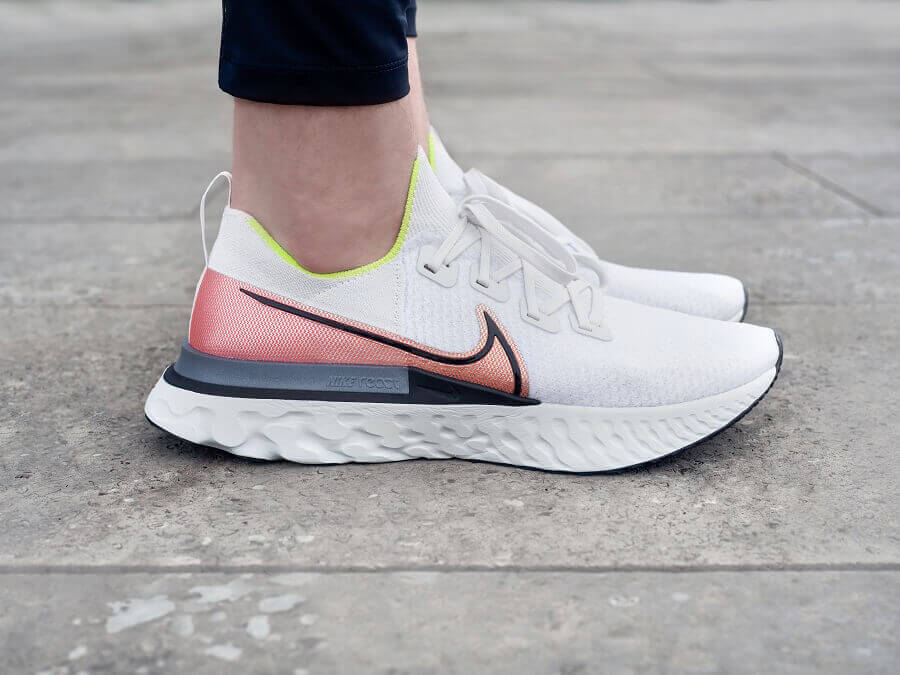How To Break In Running Shoes (And Do You Really Need To?)

We have all been there: sitting in the kitchen with a new pair of kicks in hand. Although all of us love to get new shoes, that is especially true of runners! Once you have that beautiful new pair of running shoes you may find yourself wondering: do I need to break them in gradually?
How should they fit upon purchase? What if I get blisters in the first few runs? So if you’re wondering how to break in running shoes, we got you covered.
Should Running Shoes Be Tight At First?
When sizing shoes, the first thing you need to have in the back of your brain is that no two styles of shoe fit exactly the same. In other words, if you typically wear Brooks and are looking to try some Saucony, don’t expect that they will fit the same. They may, but they also may not.

Most runners agree that running shoes should be anywhere from one-half to one full size bigger than your daily wear shoes. Why? This allows your feet to expand as you exercise. An increase in blood flow coupled with swelling will make your perfect fitting sneaks feel too snug, which is a bad thing.
So to answer the question if shoes should start off tight, the answer is no.
How Should They Fit?
If you have not been measured professionally in a while or if you have recently gone through a major life change (think having a baby, a major surgery or recent weight loss), head to the local running store for some assistance. These folks are trained to be sure you get the best possible fit for what you plan to put on your feet.
You should consider heading to have your feet measured after work or a run, when your feet are likely to be at least a little swollen. You don’t want to measure them when your feet are at their smallest first thing in the morning!
Your shoe should match the shape of your foot. That sounds odd, doesn’t it? After all, aren’t all feet shaped the same? They absolutely are not. Some feet are more narrow at the toes, some are wide in the tow box, others are wide throughout the biggest part of the foot. The point is, your shoe should be shaped similarly.

Since running shoes are meant to flex when you run, you will want to be sure you have some room near your toes. That means when you stand up and push down at the end of your foot, there should be room between where your toe ends and the end of the shoe for your thumb width to comfortably fit. The fabric of the top of the shoe should fit snug but not tight.
Running shoes are an investment so you should try running in them. Does the heel of the shoe stay comfortably in place without pulling up or having slide? It should!
Do I Have To Break In Running Shoes?
Most athletes agree that yes, you do need to break in those running shoes. If you are simply getting a newer pair of the same shoe (in the same model), you likely won’t have much to get used to.
If you are trying a newer model of the same shoe you have been running in, note that shoe companies and designers often “fix” a shoe by upgrading something about them. Also noteworthy is that not all of us see this as an upgrade. Many people find themselves frustrated when a “new, better model” does not make them as happy as the older model.
If you are trying a completely new style and/or brand of shoes, the transition may be a little more work.
How To Break In Running Shoes
The first important rule of thumb is nothing new on race day. In other words, don’t buy yourself a fresh, brand spanking new pair of shoes and race in them right off the bat. I advise athletes to have at least 20-30 miles on a pair of running shoes prior to racing in them.
I also prefer athletes to have 20-30 miles on a pair of shoes before attempting any double digit mileage, also. This is so you can be sure you are setting yourself up for success.
How Long Does It Take?
Honestly, for most people, their new shoes are broken in after a few runs. Most athletes actually rotate two or more pairs of shoes, which makes breaking in new shoes pretty straightforward. If you rotate your shoes, just begin to rotate in the new shoes on shorter running days.
For example, if your runs for the week will be 3 miles, 5 miles, 3-4 miles of track work (including warm-up and cool down) and a weekend 10 miler, try the shoes for the first time on the 3 mile run.

Another thing you can do, especially helpful if you do track work in racing flats, is to warm up in your new shoes on your track day and then do your speed work in your flats.
Your shoes should be feeling comfortable and ready to do longer runs wearing them once you have worn them 3-6 times for shorter distances.
Those Who Don’t Break Shoes In…
Some people have no problems putting on a new pair of shoes and just heading out the door. It is hard for some of us to believe, but those people do exist. There are also people who can put 1,000 plus miles on one pair of shoes; although, those people are in the minority.
The average runner logs anywhere between 300 – 500 miles per pair of shoes.
Rotating Shoes
When discussing breaking in shoes, we mention rotating shoes. Runners often choose to rotate shoes because giving the shoes a chance for the foam padding to “bounce back” is a good idea.
If you always have a few pairs of shoes in various stages of wear, it is easier to work in something new. You may find that experimenting with different shoes for different purposes leaves your feet feeling happier
Sources
- , How Long Does It Take to Break In Running Shoes? , Health & Fitness Publication
- , How Long Does It Take To Break In Running Shoes?, Blog
Latest Articles
 Is Running on a Treadmill Easier Than Running Outside?Runners have their own preferences, whether it is treadmill running, running outside on the road, or exploring trails. So...
Is Running on a Treadmill Easier Than Running Outside?Runners have their own preferences, whether it is treadmill running, running outside on the road, or exploring trails. So... Is It OK to Use Trail Running Shoes on the Road?While trail running shoes can be used on roads, especially in situations where a runner encounters mixed terrains or pref...
Is It OK to Use Trail Running Shoes on the Road?While trail running shoes can be used on roads, especially in situations where a runner encounters mixed terrains or pref... How to Fix Sore Quads After Running?Rest, ice, gentle stretching, and over-the-counter pain relievers can help soothe sore quads after running. Also, ensure ...
How to Fix Sore Quads After Running?Rest, ice, gentle stretching, and over-the-counter pain relievers can help soothe sore quads after running. Also, ensure ... 10 Fruits With The Most Electrolytes to Replace Sports DrinksThese fruits are high in electrolytes such as potassium, magnesium, and calcium, essential for hydration, muscle function...
10 Fruits With The Most Electrolytes to Replace Sports DrinksThese fruits are high in electrolytes such as potassium, magnesium, and calcium, essential for hydration, muscle function...

